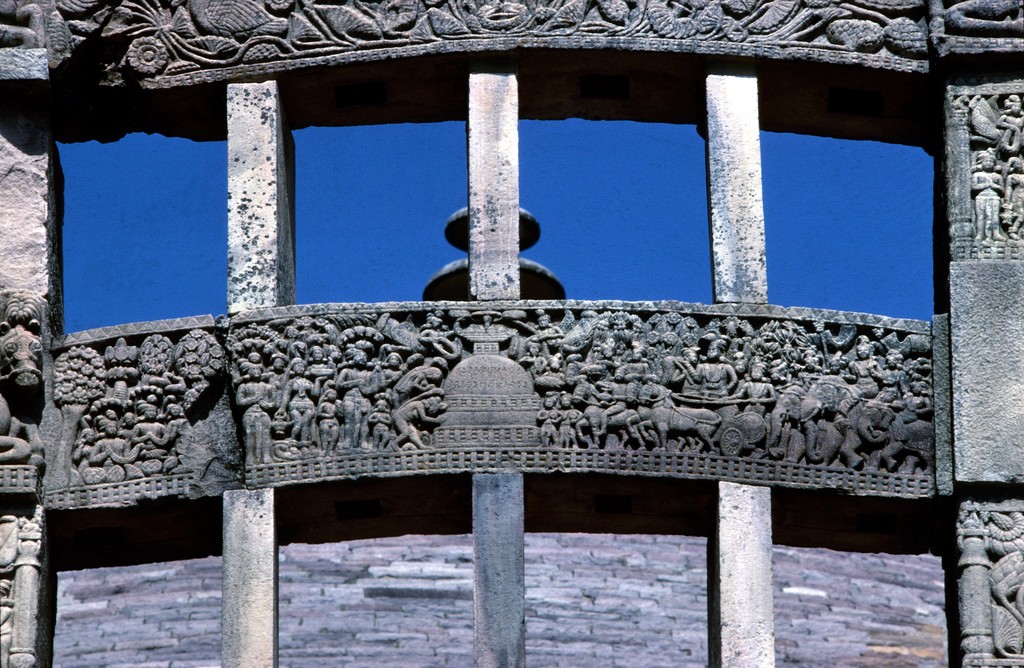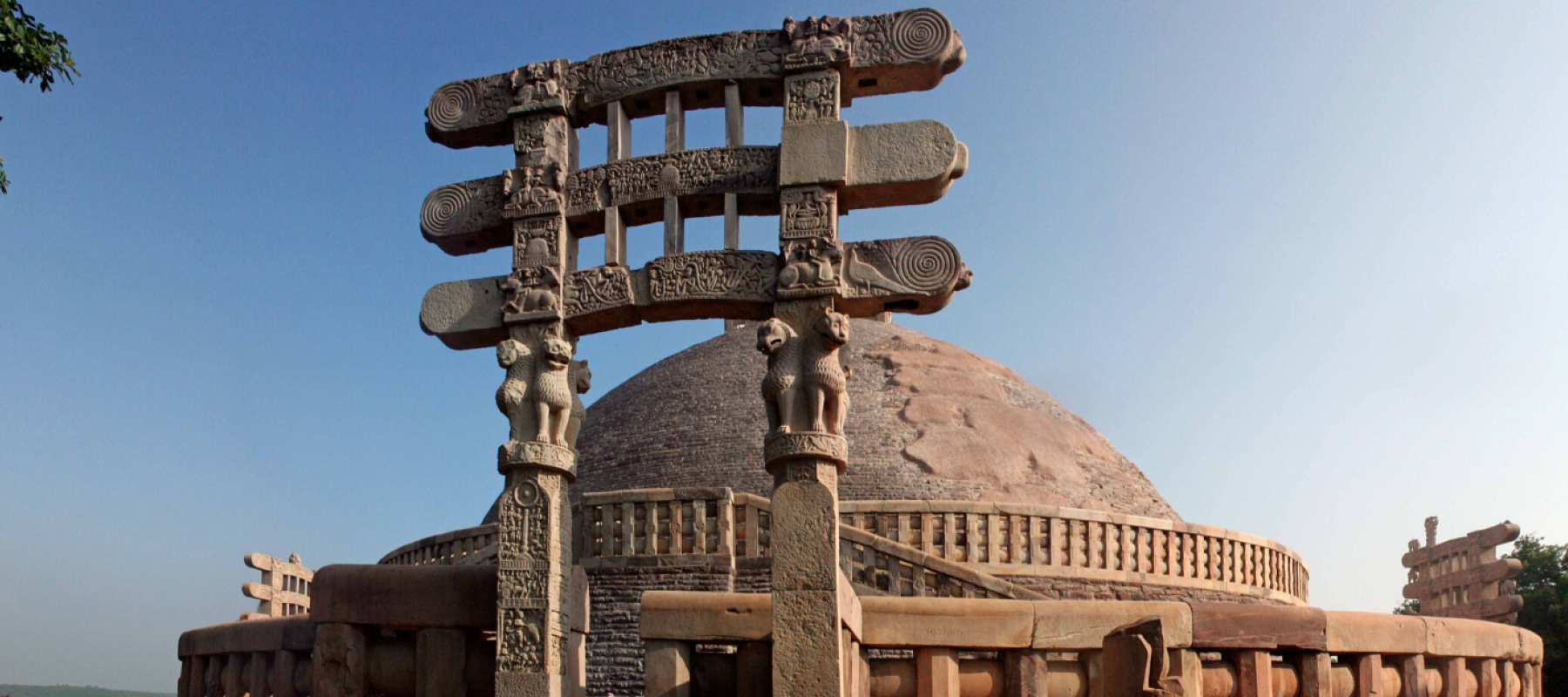A great deal of images of the Buddha and the events from his life have been produced regularly in Buddhist cultures. Four out of the many miraculous events in Budhha’s life—His Birth, Enlightenment, the First Sermon, and his Mahaparinirvana—are the most popular themes in Buddhist art. In this blog, we will look at the life of Buddha through the friezes of Sanchi.
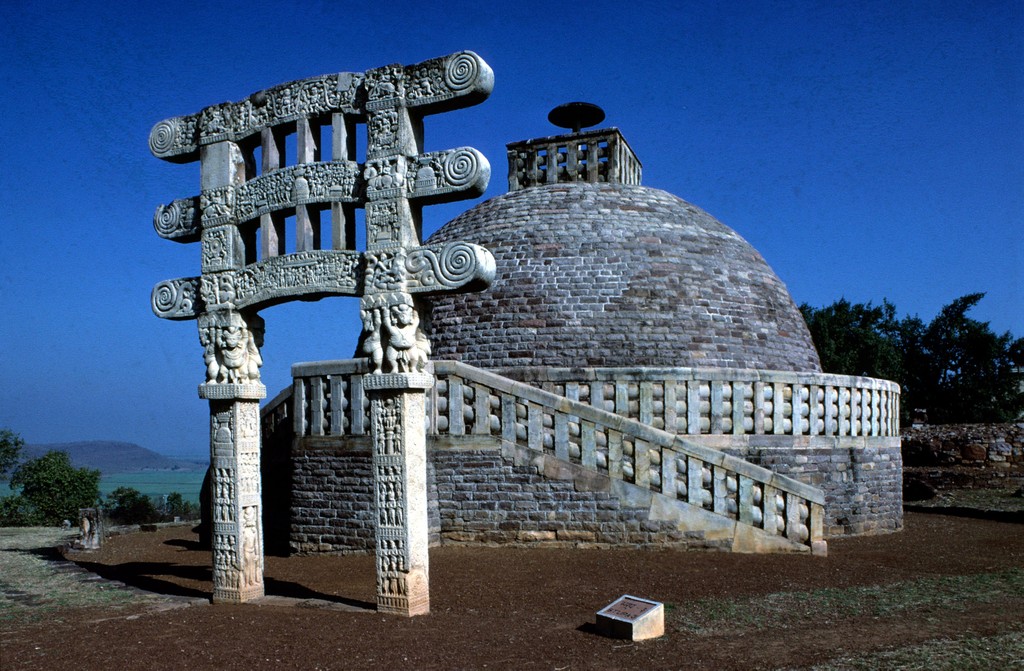
Today a UNESCO World Heritage Site, the Sanchi Stupa dates back to the third century BCE to the first century BCE. The stupa consists of a hemispherical dome surrounded by a pradakshina (circumambulatory) path for the visitors. The dome here is plain and devoid of design while the entrance gateways or ‘toranas’ at each cardinal point boast of richly carved relief sculptures depicting episodes from the life of Buddha as well as stories from the Jataka tales. But what is most interesting about the friezes of Sanchi is that the Buddha is never represented in human form. His presence is represented by symbols.
The Birth of Buddha
Before the birth of the Buddha, Queen Maya, the mother of the historical Buddha, had a dream in which a white elephant entered her from the side. In this frieze from Sanchi, Queen Maya is shown asleep in her palace while her attendants stand guard outside. And an elephant is shown descending from above and marking the conception of the Buddha. And later on a midsummer’s full moon night, or Buddha Purnima, Prince Siddartha was born.
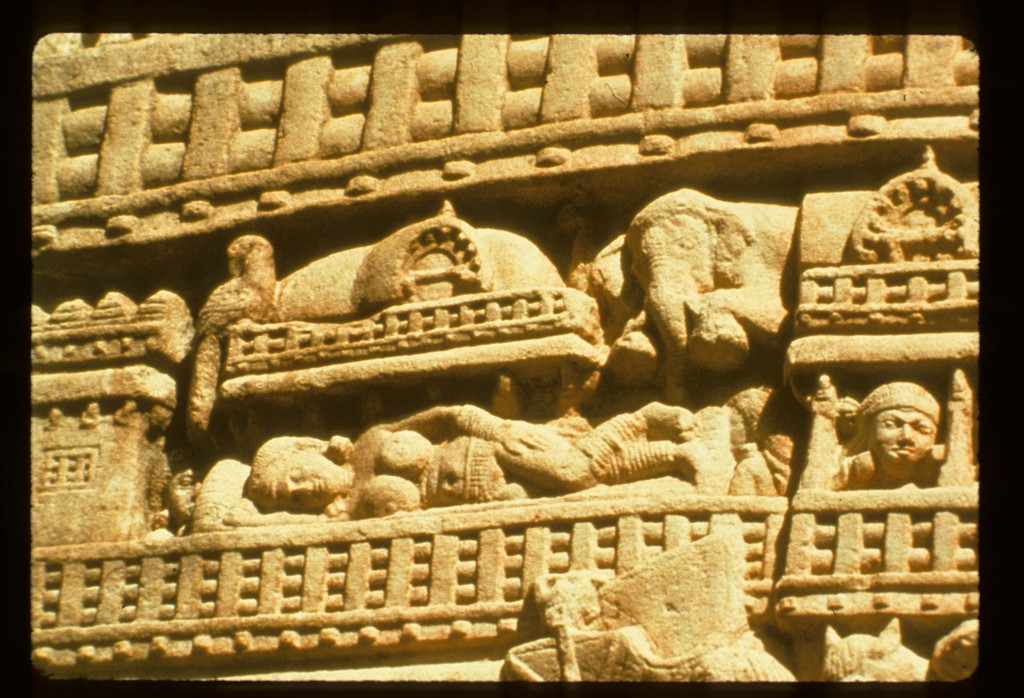
The Enlightenment
Perhaps the most important event in the life of the historical Buddha is his achievement of Enlightenment. At Sanchi, the moment of enlightenment is shown through this frieze where Buddha triumphs over Mara. According to legend, the demonic army of Mara tempted Buddha during his meditation. The demon Mara represents inner temptations that Buddha must overcome to achieve enlightenment. In this panel, Mara here is seated on a throne sad and dejected as he has lost the battle against Buddha, and Buddha is symbolised by a banyan tree, under which he actually attained enlightenment in Bodh Gaya. The moment of enlightenment is being celebrated by the gods. Here, after defeating the demonic army of Mara, Prince Siddartha earns his name ‘Buddha’ or the enlightened one.
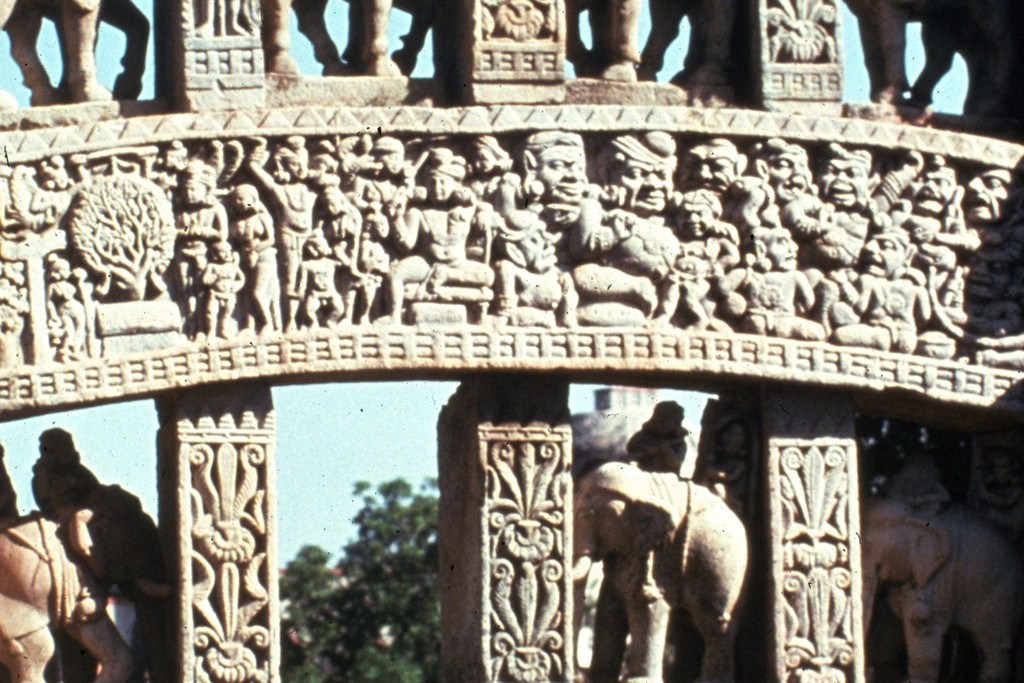
The First Sermon
After Buddha attained Enlightenment, he decided to preach his ‘Dharma’. Gautama Buddha is believed to have given his first sermon (Dharma-chakra-pravartana) in a deer park in Sarnath near Varanasi. With his sermon, he set the ‘wheel of law’ into motion. And hence, at Sanchi, the first sermon is represented by symbolising Buddha as a wheel surmounted on a column. The scene here marks the attendance of his disciples, worshippers and even celestial beings. The location of the sermon, i.e. the deer park, is clearly indicated by the deers in the foreground.
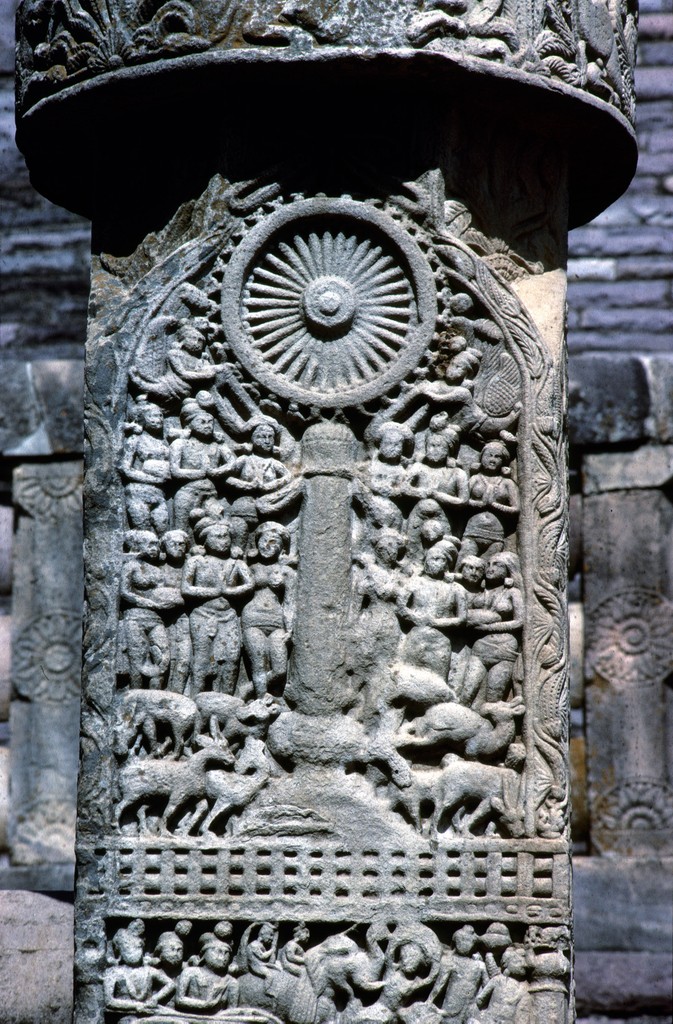
Mahaparinirvana:
The last graphic depiction from Buddha’s life is his ‘Mahaparinirvana’. This event is represented by his stupa which is attended by worshippers, royalty and celestial beings. In Buddhism, the stupa is associated with the body of the Buddha as the earliest stupas contained Buddha’s relics. Besides, Buddha himself wished to have stupas constructed at places where these four major events in his life occurred. And hence the use of stupa as a symbol of his ‘Mahaparinirvana’.
